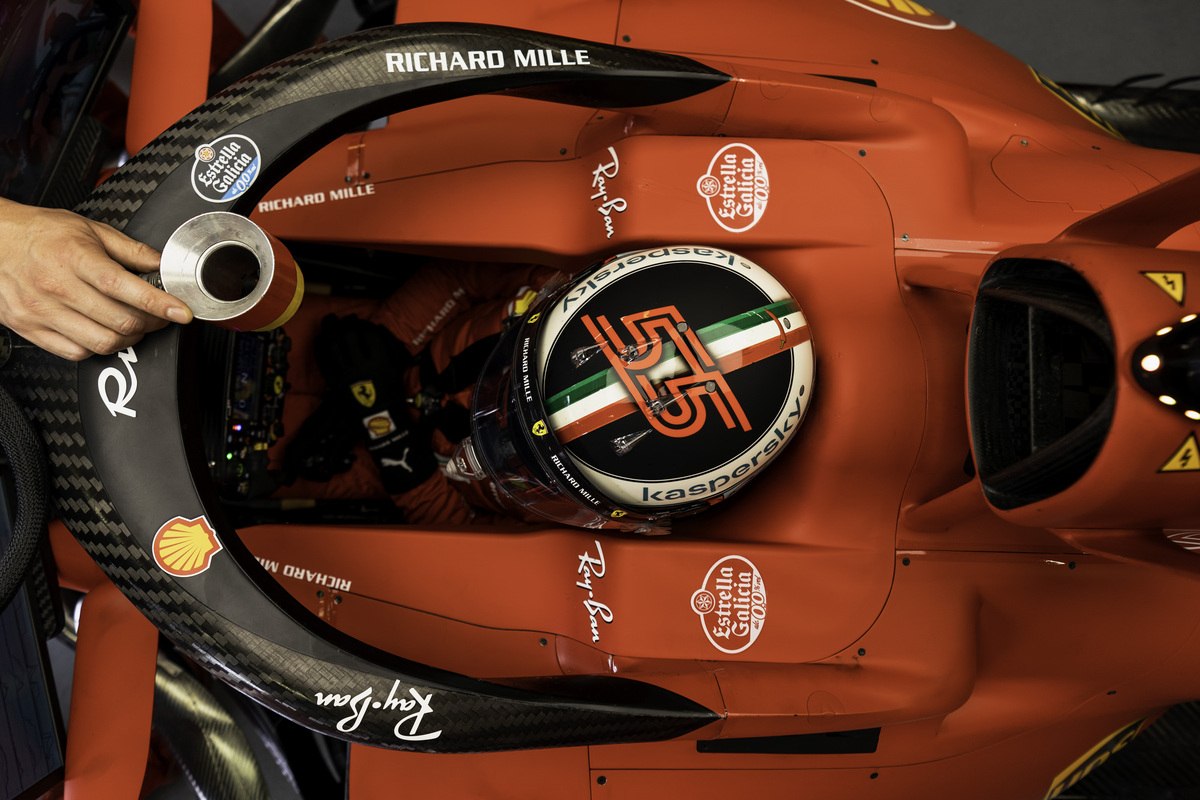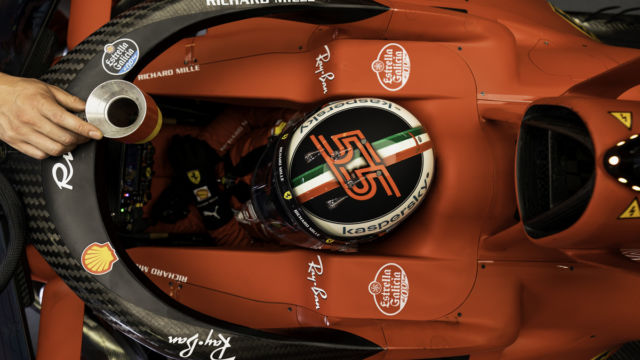Why Do F1 Drivers Wear Knee Pads?


F1 drivers wear knee pads as a crucial piece of safety equipment to protect their legs from injury during high-speed crashes and to provide comfort and support during long, physically demanding races.
These specially designed pads absorb impact forces, reduce the risk of fractures or soft tissue damage, and help drivers maintain proper positioning in the cockpit.
The use of knee pads is mandated by the FIA, motorsport’s governing body, as part of a comprehensive set of safety regulations aimed at protecting drivers in the event of an accident.
As technology and materials continue to advance, knee pads remain an essential component of an F1 driver’s safety gear, allowing them to race with confidence and focus on achieving optimal performance on the track.
The Purpose of Knee Pads
Knee pads serve two primary purposes for F1 drivers: protection during crashes and providing comfort and support during races.
Protection During Crashes
One of the main reasons F1 drivers wear knee pads is to protect their legs from injury in the event of a crash. The high speeds and intense forces involved in F1 accidents can put a driver’s legs at risk of serious injury, such as fractures or soft tissue damage.
Knee pads are designed to absorb and dissipate impact forces, reducing the risk of injury to the driver’s legs. They are typically made from high-density foam or other impact-absorbing materials that compress upon impact, absorbing energy and minimizing the force transmitted to the driver’s legs.
Real-world examples demonstrate the effectiveness of knee pads in protecting drivers during accidents. In the 2021 Italian Grand Prix, Max Verstappen’s Red Bull car crashed on top of Lewis Hamilton’s Mercedes, with Verstappen’s rear wheel striking Hamilton’s helmet. Hamilton credited his knee pads with helping to protect his legs during the incident, stating, “I think the knee pads definitely saved my knees today.”
Comfort and Support
In addition to their protective function, knee pads also provide comfort and support to drivers during long and physically demanding races. F1 drivers experience high G-forces and vibrations throughout a race, which can put a strain on their bodies and cause fatigue.
Knee pads help to cushion the driver’s legs against the side of the cockpit, reducing discomfort and helping to maintain proper positioning. By keeping the driver’s legs in an optimal position, knee pads can help to reduce muscle fatigue and improve overall comfort during the race.
Moreover, the support provided by knee pads can help drivers maintain consistent brake and throttle control, as they are less likely to experience leg movement or slippage due to the high G-forces experienced in corners and under braking.
The comfort and support provided by knee pads are particularly important in longer races, such as the Singapore Grand Prix, which can last up to two hours and is known for its physically demanding nature due to the high humidity and numerous corners.
The Design and Materials of F1 Knee Pads
F1 knee pads are highly specialized pieces of safety equipment that are custom-made for each driver and designed to meet the rigorous demands of top-level motorsport.
Customization for Each Driver
To ensure optimal fit and performance, knee pads are tailored to the specific measurements and requirements of each individual driver. This customization process involves taking precise measurements of the driver’s legs and knees to create a mold that perfectly contours to their shape.
A snug and secure fit is crucial to prevent the knee pads from shifting or moving during the intense movements and forces experienced in an F1 race. Any gaps or looseness could compromise the protective capabilities of the knee pads and potentially lead to injury.
Drivers may also have personal preferences for the level of padding, thickness, or flexibility of their knee pads, which can be accommodated during the customization process.
Materials Used
F1 knee pads are constructed from advanced materials that are carefully selected for their impact-absorbing properties, fire resistance, and durability.
High-density foam is a common choice for the main padding material, as it effectively absorbs and dissipates impact energy. This foam is typically a closed-cell polyethylene or polypropylene material that compresses upon impact and then quickly returns to its original shape.
To ensure the safety of drivers in the event of a fire, the outer layer of the knee pads is made from fire-resistant materials, such as Nomex or Kevlar. These materials can withstand high temperatures and provide an additional layer of protection for the driver.
The use of lightweight, yet strong, materials is also essential to minimize the overall weight of the knee pads, as every gram counts in the pursuit of optimal performance in F1.
Placement and Attachment
Knee pads are strategically positioned on the driver’s legs to provide maximum protection and support. They are typically placed on the sides of the knees, extending from the upper thigh to the lower leg.
To keep the knee pads securely in place, they are often attached using Velcro straps or other adjustable fasteners. These attachment methods allow for easy installation and removal of the knee pads, while ensuring a snug and stable fit.
In some cases, knee pads may be integrated directly into the driver’s race suit, further enhancing their stability and reducing the risk of movement during the race.
The placement and attachment of knee pads are carefully considered to ensure they do not interfere with the driver’s ability to operate the pedals or move their legs freely while driving.
Knee Pad Regulations and Requirements
The use of knee pads in F1 is governed by a set of strict regulations and requirements established by the FIA (Fédération Internationale de l’Automobile), the governing body for world motorsport. These regulations ensure that all drivers are equipped with high-quality, safety-focused knee pads that meet rigorous standards.
FIA Safety Standards
The FIA has established a comprehensive set of safety standards that all driver equipment, including knee pads, must meet. These standards are outlined in the FIA Standard 8856-2018, which covers protective clothing for automobile drivers.
According to this standard, knee pads must be constructed from materials that provide adequate impact protection and fire resistance. The materials used must undergo rigorous testing to ensure they can withstand the forces and temperatures that may be encountered during an accident.
Specific requirements for knee pads include:
- Impact protection: Knee pads must provide a minimum level of impact protection, as determined by the FIA’s impact testing procedures. This ensures that the pads can effectively absorb and dissipate energy during a crash.
- Fire resistance: The outer layer of the knee pads must be made from fire-resistant materials that comply with the FIA’s fire-resistant standard (ISO 15025). This helps protect the driver in the event of a fire.
- Thickness and coverage: The FIA regulations specify minimum thickness requirements for knee pads to ensure adequate protection. The pads must also provide sufficient coverage of the knee and surrounding areas.
Mandatory Use
The use of FIA-approved knee pads is mandatory for all F1 drivers. This requirement is enforced through regular scrutineering checks conducted by FIA officials before and during race weekends.
Drivers must wear their knee pads at all times while in the car, including during practice sessions, qualifying, and the race itself. Failure to comply with this regulation can result in penalties, such as fines or even disqualification from the event.
The mandatory use of knee pads ensures that all drivers are adequately protected and helps to maintain a level playing field in terms of safety equipment.
In addition to knee pads, F1 drivers are required to wear a range of other FIA-approved safety equipment, including helmets, racing suits, gloves, and boots. All of these items must meet the FIA’s rigorous safety standards and are subject to regular checks and inspections.
By enforcing strict regulations and requirements for knee pads and other safety equipment, the FIA aims to minimize the risk of injury to drivers and promote a culture of safety in F1. As technology and materials continue to advance, the FIA regularly reviews and updates its safety standards to ensure that drivers are always protected by the best available equipment.
Conclusion
Formula 1 drivers have to be in top physical and mental condition for 24 races in a season. Some of the races are scheduled on successive weekends. It is not easy for drivers to get back in peak form from the ordeals of a race. That is the reason why drivers use all protective measures to guard their body and their lives. Using knee pads keeps the knees safe from the hits on the sides and front of the cockpit. Knee pads also brace the upper and lower legs. This helps the driver brace against the G-forces and control the car better.
From F1 news to tech, history to opinions, F1 Chronicle has a free Substack. To deliver the stories you want straight to your inbox, click here.
New to Formula 1? Check out our Glossary of F1 Terms, and our Beginners Guide to Formula 1 to fast-track your F1 knowledge.


